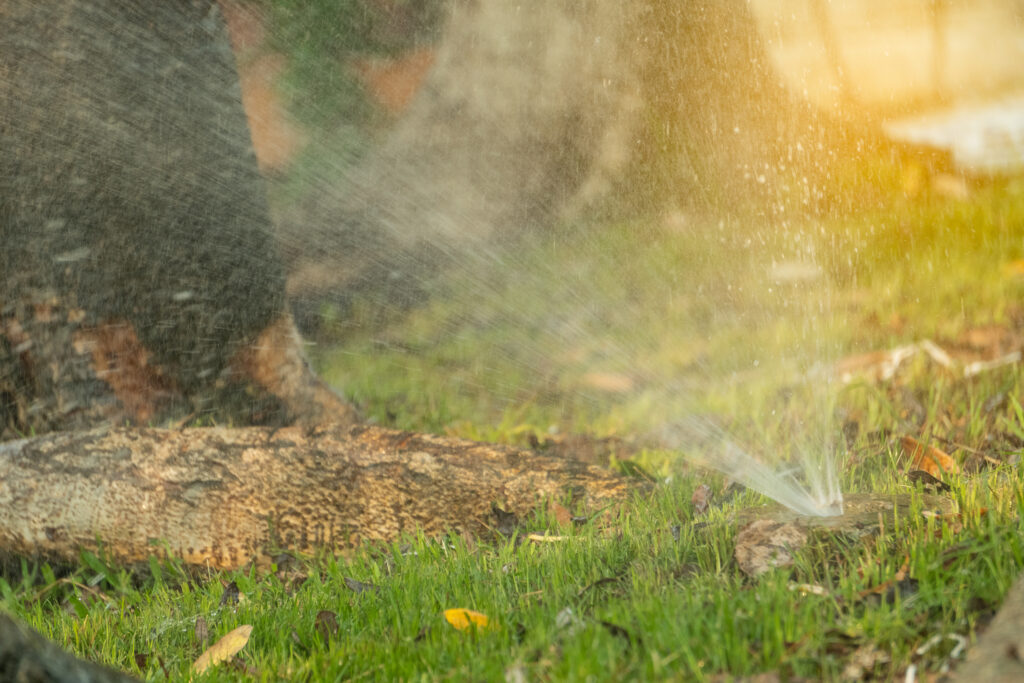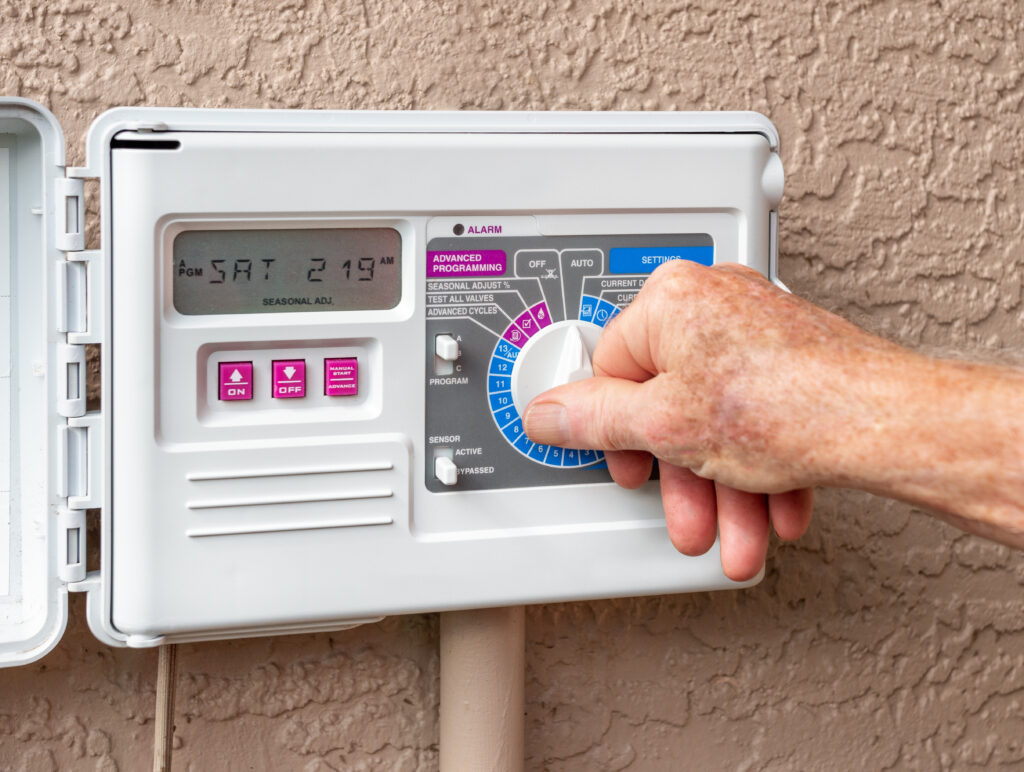
Your irrigation system works hard behind the scenes to keep your landscape green and healthy. But just like any other part of your home, it needs seasonal care to perform its best. Whether you’re getting ready for spring or preparing for winter, knowing how to properly start up and shut down your irrigation system can prevent costly repairs, water waste, and plant stress.
Here’s your step-by-step irrigation checklist for both fall and spring—straight from the pros at Wynnow.
🍁 Fall Shut-Down: Protecting Against Freeze Damage
As temperatures drop, shutting down your irrigation system correctly is crucial to avoid costly winter damage. Water left in pipes can freeze, expand, and burst—turning a simple maintenance task into a full replacement job come spring.
Here’s how to prepare:
✅ 1. Turn Off the Water Supply
Locate your main irrigation shut-off valve and close it completely. If your system has a separate outdoor shut-off, be sure both are off.
✅ 2. Drain the Lines

- Manual drain systems: Open all drain valves to release trapped water.
- Automatic drain systems: Trigger a short cycle to relieve pressure.
- Blow-out method: Hire a professional to use compressed air—this is the safest and most thorough option.
✅ 3. Protect the Backflow Preventer
Backflow devices are often the first components to freeze and crack. Insulate them with weatherproof covers or remove and store them indoors if possible.
✅ 4. Clear and Store Accessories
Remove any detachable sprinkler heads or drip emitters that are easy to replace next season. Clean filters and store them dry.
✅ 5. Shut Down the Controller
Either unplug your system’s controller or switch it to “off” or “rain mode” to preserve settings for next year.
🌷 Spring Start-Up: Setting Up for a Healthy Season
When temperatures stay above freezing and the ground has thawed, it’s time to bring your system back online. But flipping it on too early—or skipping checks—can lead to leaks or damaged components.
Here’s what to do before you water that first patch of grass:
✅ 1. Inspect for Winter Damage

- Check sprinkler heads for cracks or misalignment.
- Look for visible leaks or soft spots in the lawn that might indicate underground breaks.
- Inspect the main line and backflow preventer for signs of freezing damage.
✅ 2. Open the Water Supply Slowly
Turn the main valve on gradually to avoid pressure surges that could crack pipes or fittings. Let the system fill up slowly while listening for unusual noises or hissing that might signal a leak.
✅ 3. Test Each Zone
Run each irrigation zone individually and look for:
- Uneven spray patterns
- Heads that don’t pop up
- Areas with low pressure
Making these adjustments early saves water and ensures even coverage once temperatures rise.
✅ 4. Check the Controller Settings

Update your timer and zone schedules for seasonal needs. Spring usually requires shorter, more frequent watering until the weather stabilizes.
✅ 5. Replace Batteries & Update Smart Features
If you have a smart controller, check Wi-Fi connections and software updates. Replace any backup batteries to ensure your schedule stays intact during power outages.
💧 Why Seasonal Irrigation Maintenance Matters
A properly maintained irrigation system doesn’t just save you headaches—it saves money and resources.
- Avoid Repairs: Freeze damage and high-pressure surges can lead to costly leaks.
- Save Water: Efficient sprinklers and balanced coverage prevent waste.
- Healthier Landscaping: Consistent, even watering supports root growth and soil balance.
- Boosted Property Value: A lush, well-watered lawn makes a great first impression year-round.

🌿 Keep Your Irrigation System Running Smoothly with Wynnow
At Wynnow, we provide complete irrigation maintenance, start-up, and winterization services designed to protect your investment and keep your landscape thriving through every season.
💧 Schedule your spring or fall service today—and keep your lawn looking its best year-round. If you found this blog helpful, please check us out on Facebook, Instagram and X for more!

